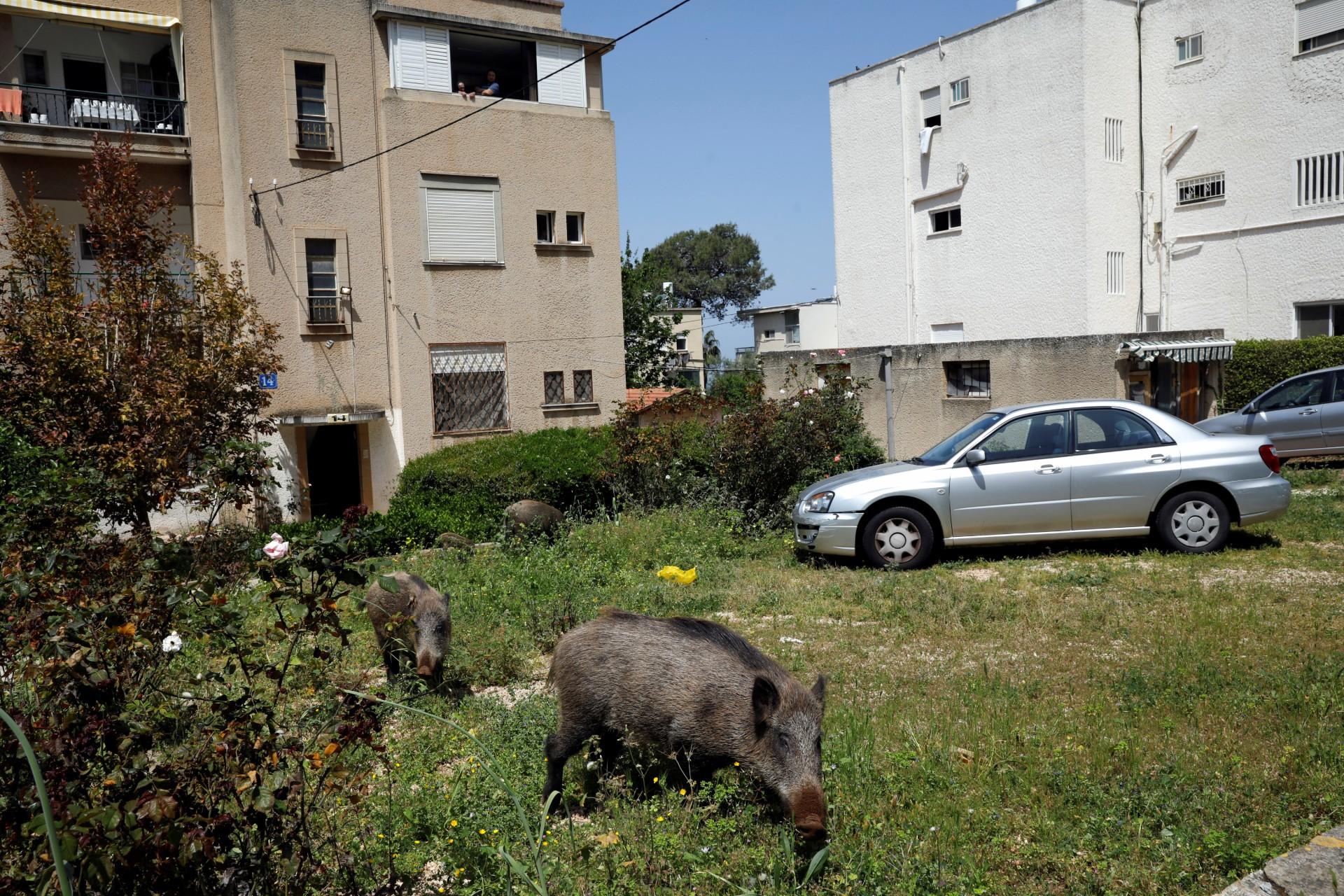COVID-19 lockdowns are a unique chance to study human-wildlife interactions, researchers say
Wild boars roam next to residential buildings after the government ordered residents to stay home to fight the spread of coronavirus disease (COVID-19), in Haifa, northern Israel, on April 16, 2020.
Pumas roaming the empty streets of Santiago in Chile. Dolphins in the unusually calm waters off of Trieste Italy. Jackals roaming city parks in Tel Aviv in broad daylight.
The lockdowns on human movement during the pandemic have also changed the way wildlife is behaving.
Christian Rutz, an evolutionary ecologist at the University of St. Andrews in Scotland, is proposing a global research effort to study that changed behavior.
In a recent article published in Nature Ecology & Evolution, a research journal, Rutz and his co-authors suggest naming the reduction of human movement due to COVID-19 lockdowns an “anthropause.” The article urges the international research community to work together to study how human activity affects wildlife.
“Scientific knowledge gained during this devastating crisis will allow us to develop innovative strategies for sharing space on this increasingly crowded planet, with benefits for both wildlife and humans,” they write.
Rutz spoke with The World about his global research proposal to understand wildlife movement during lockdowns.
Related: Herd of goats takes over deserted resort in Britain amid lockdown
Marco Werman: You’ve coined this phenomenon as the “anthropause,” a pause in human activity. It’s been fascinating to watch from a human perspective, but how significant is this period for wildlife?
Christian Rutz: It provides a fantastic opportunity for researchers to find out more about human and wildlife interactions. And I should say at the outset, it’s an opportunity that has come about by the most tragic circumstances. But we feel it’s one we can’t afford to miss. We are proposing to use tiny little tracking devices, which wildlife biologists have fitted to animals all over the world, to learn more about how wildlife responded to this drastic and sudden reduction to modern human mobility during the anthropause.
What kinds of things are scientists starting to learn about animal behaviors during this natural experiment?
We have just launched this initiative, and we have put out a call to the international research community to help us by sharing the data. So we are at the launch stage of this project and unfortunately, I don’t have firm answers for you yet. But we put out this call and were overwhelmed by the enthusiastic response we got from scientists around the world. So we know we’ve got the data. But now it’s time for us to analyze this data and look for these effects some people have predicted. But what is important to us is that once we have answers, we want to turn those into policy recommendations going forward, looking at ways of how we can structure our modern human lives in a way that is beneficial for the planet and for us. We don’t have answers yet. You will have to wait another few weeks or months. And I’m happy to come back to the show.
We would love to have you let me ask you this, because there are hundreds of ongoing research projects on animal movement around the world. Are there any studies that you’re watching closely?
The really exciting thing about this initiative is that it provides this umbrella for all these different studies to come together and contribute data. And I have to say, these studies, they were all initially launched as independent research projects. So these were biologists that studied their chosen study species, put tracking devices on animals, and then COVID-19 happened. Nobody saw that coming. But these devices kept delivering data. And now in this period of crisis, all these colleagues have decided, rather than pursuing their independent research projects, it’s better to pull resources together and do these global collaborative analysis.
For you personally, once the lockdown started, was there kind of a eureka moment when you realized that there was an opportunity to really better understand animal movement?
I remember when I was permitted to go for a brief walk with my family here in Scotland, for the very first time in our local village, we saw a pair of ravens. We’ve been living here for eight years and have never seen ravens. So this was a first personal glimpse of something changing in nature and where we live.
This interview has been condensed and edited.
